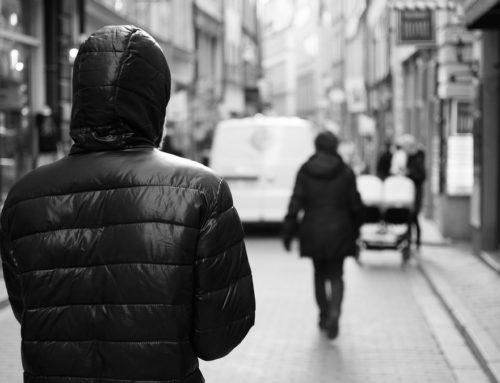Unfortunately there are times when people must evacuate their homes. Various types of emergencies or disasters can strike and it’s important to already have a plan in place before it’s too late or you’re caught off guard. Disasters can happen anytime and anywhere, so it is important to be prepared before disaster hits. Disasters can be natural or human-made. This blog is inspired by some of the emergency situations taking place locally in Massachusetts as well as in the Carolinas. The eastern seaboard had days to prepare for Hurricane Florence but towns in Massachusetts had no warning before gas line explosions caused fires to break out. Although nothing is guaranteed – in either case, a properly prepared home has a better chance of avoiding tragedy.
September is National Preparedness Month, which makes it the perfect time to reflect on what plans you and your family have in place for disasters – predictable or not. The more you plan and prepare, the more effective you will be at prevention. Today we’re taking a look at what to do if you’re forced to evacuate your home. A wide variety of emergencies may cause an evacuation. Sometimes you may have a day or two to prepare, while other situations might call for an immediate evacuation. Planning ahead is crucial to making sure you can evacuate quickly and safely, no matter what the circumstances.
Evacuations in the U.S. are more common than most people realize, according to Federal Emergency Management Agency (FEMA). A survey found that nearly 60 percent of American adults have not practiced what to do in a disaster by participating in a disaster drill or preparedness exercise at work, school, or home in the past year. Further, only 39 percent of respondents have developed an emergency plan and discussed it with their household. This is despite the fact that 80 percent of Americans live in counties that have been hit with a weather-related disaster since 2007. With the number and severity of weather-related disasters on the rise and the potential for any type of emergency to strike, it’s important to review evacuation plans.
There are various reasons for evacuations. Natural disasters may come in the form of hurricanes, windstorms, snow storms, earthquakes or tornadoes. Some of these occur at specific times of year, while others can strike at any time. In today’s world, people are often told to leave their homes due to the form of human-made events, such as a chemical or biological attacks, transportation accidents or industrial accidents. Whatever the case may be – we’re here to help with guidelines and suggestions.
If you have any questions regarding personal injury or safety, please contact Schulze Law today. We can help by offering advice on how to properly plan and protect.
In an emergency, time and space is limited. Regardless of the circumstances, an emergency evacuation is scary. Getting all of your ducks in a row before disaster strikes is the best course of action.
According to Ready.gov:
Before an Evacuation
- Learn the types of disasters that are most likely to affect your community and surrounding area. Find out the local emergency, evacuation, and shelter plans for each specific disaster.
- Plan your exit route and know where you will go if you are instructed to evacuate.
- Identify several places you could go in an emergency. For example, a friend’s home in another town or a motel. Choose destinations in different directions so that you have options during an emergency.
- If you have a pet, be sure to identify a place to stay that will accept your furry friend.
- Get familiar with alternate routes and other means of transportation out of your area.
- Always follow the instructions of local officials.
- Develop a family/household communication and re-unification plan so that you can stay in contact and take the best actions for each of you and re-unite if you are separated.
- Assemble supplies that are ready for evacuation, both a “go-bag” (more on that below!)
- If you have a car:
- Keep a full tank of gas in it if an evacuation seems likely. Keep a half tank of gas in it at all times in case of an unexpected need to evacuate. Gas stations may be closed during emergencies and unable to pump gas during power outages. Plan to take one car per family to reduce congestion and delay.
- Make sure you have a portable emergency kit in the car.
- If you do not have a car, plan how you will leave if needed. Make arrangements with family, friends or your local government.
- Safeguard pets. Make sure they’re micro-chipped and have I.D. collars. Create pet grab-and-go kits that include leashes, medications, meal bowls, and three days worth of food and water.
- Prep your yard. Maintain your trees and shrubs so there is less potential damage to your property.
- Know your utility shutoffs. Learn now how to safely shut off all utility services in your home.
- Protect windows. If you live in an area susceptible to hurricanes, install shutters that provide protection.
During an Evacuation
- A list of open shelters can be found during an active disaster in your local area by downloading the FEMA app.
- Listen to a battery-powered radio and follow local evacuation instructions.
- Take your “go bag.”
- Leave early enough to avoid being trapped by severe weather.
- Take your pets with you, but make sure you have a plan for them.
- If time allows:
- Call or email the out-of-state contact in your family communications plan. Tell them where you are going.
- Secure your home by closing and locking doors and windows.
- Unplug electrical equipment such as radios, televisions and small appliances. Leave freezers and refrigerators plugged in unless there is a risk of flooding. If there is damage to your home and you are instructed to do so, shut off water, gas and electricity before leaving.
- Leave a note telling others when you left and where you are going.
- Dress appropriately for the weather. Wear sturdy shoes and clothing that provides some protection such as long pants, long-sleeved shirts and a hat.
- Check with neighbors who may need a ride.
- Follow recommended evacuation routes. Do not take shortcuts; they may be blocked.
- Be alert for road hazards such as washed-out roads or bridges and downed power lines. Do not drive into flooded areas.
After an Evacuation
If you evacuated for the storm, be sure to check with local officials both where you’re staying and back home before you travel anywhere!
- If you’re returning to disaster-affected areas after significant events, you should expect and prepare for disruptions to daily activities. Remember that returning home before storm debris is cleared is dangerous.
- Let friends and family know your location.
- Charge devices and consider getting back-up batteries in case power-outages continue.
- Fill up your gas tank and consider downloading a fuel app to check for outages along your route.
- Bring supplies such as water and non-perishable food for the car ride.
- Walk the perimeter. Once you’ve arrived at home, walk around the perimeter before you go inside.
- Avoid downed power or utility lines; they may be live with deadly voltage. Stay away and report them immediately to your power or utility company.
- Only use generators away from your home and NEVER run a generator inside a home or garage, or connect it to your home’s electrical system.
- Don’t drink the water. Depending on the cause of the emergency, sewer systems, wells, and septic systems may not be working properly, and tap water may be unsafe to drink.
- When in doubt, throw it out. Food and drinks inside your fridge or freezer may need to be tossed when you return home.
- Photograph the damage. If your home has sustained any damage, try to take detailed photographs before you begin cleaning up.
- Save receipts for additional living expenses. If you’re forced to leave your home in a government-ordered evacuation, your home insurance policy may include coverage for out-of-pocket expenses like food and a place to stay.
Have a “go bag” ready!
- Pick a bag
- Take photos of all the rooms in your home, along with all your valuables. Store these photos on a cloud server, and back them up on a flash drive.
- Scan all your important documents, and save them on a flash drive. You could also save them onto a cloud server if you have an encryption service you trust.
- These documents include:
- Driver’s license
- The deed to your house
- Your will and/or trust
- Proof of insurance
- Medical records
- Passports
- Social security cards
- Birth certificates
- A list of personal contacts with their addresses and phone numbers
- Your kids’ immunization records
- Your pet’s paperwork for vaccinations and medical history
- Add essential supplies to help you get by for a few days. This includes water (one gallon per person per day), non-perishable food, a first-aid kit, a flashlight, batteries, clothes, diapers and pet supplies. Ready.gov has a full emergency kit checklist that you can download.
Whether the evacuation order is voluntary or mandatory, it will mostly likely be scary. If officials in your area tell you to evacuate, you should do so before things get worse. We encourage everyone to plan ahead and stay safe. Please call Schulze Law with any questions.
https://www.fema.gov/
https://www.ready.gov/
https://www.houselogic.com/
https://lifehacker.com/
https://www.economical.com/






